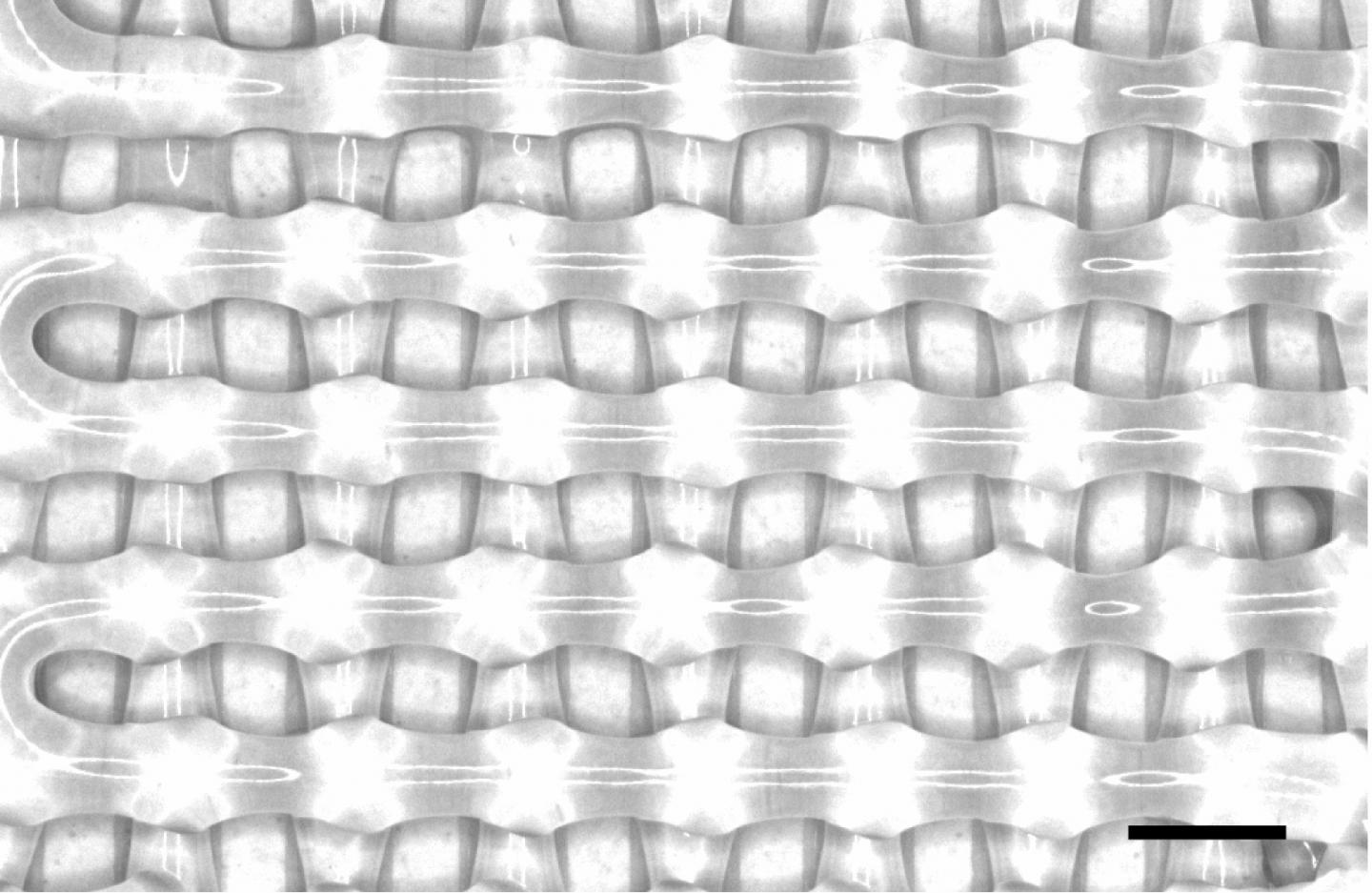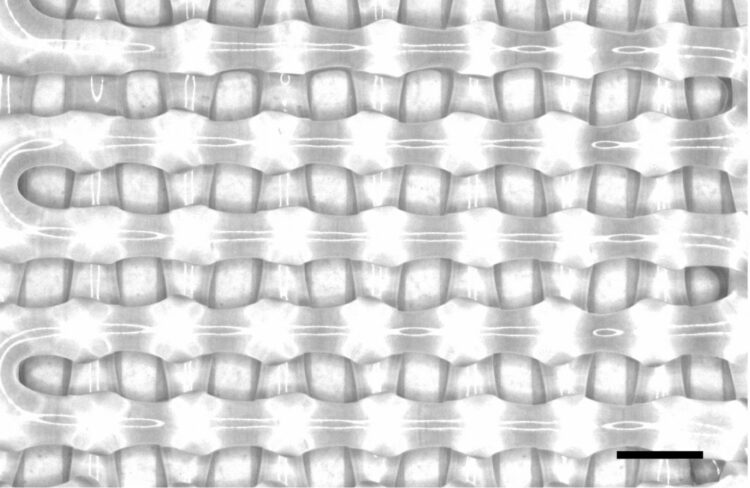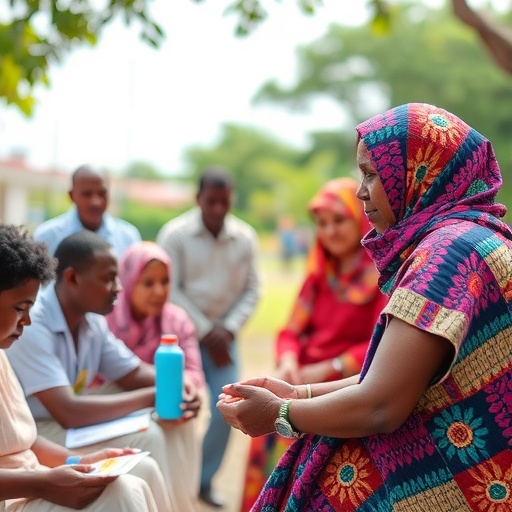Rice University engineers use machine learning to speed bioscaffold development

Credit: Mikos Research Group/Rice University
HOUSTON – (Sept. 21, 2020) – A dose of artificial intelligence can speed the development of 3D-printed bioscaffolds that help injuries heal, according to researchers at Rice University.
A team led by computer scientist Lydia Kavraki of Rice’s Brown School of Engineering used a machine learning approach to predict the quality of scaffold materials, given the printing parameters. The work also found that controlling print speed is critical in making high-quality implants.
Bioscaffolds developed by co-author and Rice bioengineer Antonios Mikos are bonelike structures that serve as placeholders for injured tissue. They are porous to support the growth of cells and blood vessels that turn into new tissue and ultimately replace the implant.
Mikos has been developing bioscaffolds, largely in concert with the Center for Engineering Complex Tissues, to improve techniques to heal craniofacial and musculoskeletal wounds. That work has progressed to include sophisticated 3D printing that can make a biocompatible implant custom-fit to the site of a wound.
That doesn’t mean there isn’t room for improvement. With the help of machine learning techniques, designing materials and developing processes to create implants can be faster and eliminate much trial and error.
“We were able to give feedback on which parameters are most likely to affect the quality of printing, so when they continue their experimentation, they can focus on some parameters and ignore the others,” said Kavraki, a renowned authority on robotics, artificial intelligence and biomedicine and director of Rice’s Ken Kennedy Institute.
The team reported its results in Tissue Engineering Part A.
The study identified print speed as the most important of five metrics the team measured, the others in descending order of importance being material composition, pressure, layering and spacing.
Mikos and his students had already considered bringing machine learning into the mix. The COVID-19 pandemic created a unique opportunity to pursue the project.
“This was a way to make great progress while many students and faculty were unable to get to the lab,” Mikos said.
Kavraki said the researchers — graduate students Anja Conev and Eleni Litsa in her lab and graduate student Marissa Perez and postdoctoral fellow Mani Diba in the Mikos lab, all co-authors of the paper — took time at the start to establish an approach to a mass of data from a 2016 study on printing scaffolds with biodegradable poly(propylene fumarate), and then to figure out what more was needed to train the computer models.
“The students had to figure out how to talk to each other, and once they did, it was amazing how quickly they progressed,” Kavraki said.
From start to finish, the COVID-19 window let them assemble data, develop models and get the results published within seven months, record time for a process that can often take years.
The team explored two modeling approaches. One was a classification method that predicted whether a given set of parameters would produce a “low” or “high” quality scaffold. The other was a regression-based approach that approximated the values of print-quality metrics to come to a result. Kavraki said both relied upon a “classical supervised learning technique” called random forest that builds multiple “decision trees” and “merges” them together to get a more accurate and stable prediction.
Ultimately, the collaboration could lead to better ways to quickly print a customized jawbone, kneecap or bit of cartilage on demand.
“A hugely important aspect is the potential to discover new things,” Mikos said. “This line of research gives us not only the ability to optimize a system for which we have a number of variables — which is very important — but also the possibility to discover something totally new and unexpected. In my opinion, that’s the real beauty of this work.
“It’s a great example of convergence,” he said. “We have a lot to learn from advances in computer science and artificial intelligence, and this study is a perfect example of how they will help us become more efficient.”
“In the long run, labs should be able to understand which of their materials can give them different kinds of printed scaffolds, and in the very long run, even predict results for materials they have not tried,” Kavraki said. “We don’t have enough data to do that right now, but at some point we think we should be able to generate such models.”
Kavraki noted The Welch Institute, recently established at Rice to enhance the university’s already stellar reputation for advanced materials science, has great potential to expand such collaborations.
“Artificial intelligence has a role to play in new materials, so what the institute offers should be of interest to people on this campus,” she said. “There are so many problems at the intersection of materials science and computing, and the more people we can get to work on them, the better.”
###
Kavraki is the Noah Harding Professor of Computer Science and a professor of bioengineering, mechanical engineering and electrical and computer engineering. Mikos is the Louis Calder Professor of Bioengineering and Chemical and Biomolecular Engineering and a professor of chemistry and materials science and nanoengineering.
The National Institutes of Health, Rice University, the National Science Foundation and a Rubicon postdoctoral fellowship from the Netherlands Organization for Scientific Research supported the study.
Read the abstract at https:/
This news release can be found online at https:/
Follow Rice News and Media Relations via Twitter @RiceUNews.
Related materials:
Grooves hold promise for sophisticated healing: http://news.
3D-printed tissues may keep athletes in action: http://news.
Grow a better jawbone in your ribs: http://news.
Kavraki Lab: http://www.
Mikos Research Group: https:/
Department of Computer Science: https:/
Department of Bioengineering: https:/
Image for download:
https:/
A “high quality” 3D-printed bioscaffold as designed with help from a machine learning algorithm developed at Rice University. Scale bar equals 1 millimeter. (Credit: Mikos Research Group/Rice University)
https:/
Artificial intelligence can speed the development of 3D-printed bioscaffolds like the one above to help injuries heal, according to researchers at Rice University. (Credit: Jeff Fitlow/Rice University)
Located on a 300-acre forested campus in Houston, Rice University is consistently ranked among the nation’s top 20 universities by U.S. News & World Report. Rice has highly respected schools of Architecture, Business, Continuing Studies, Engineering, Humanities, Music, Natural Sciences and Social Sciences and is home to the Baker Institute for Public Policy. With 3,978 undergraduates and 3,192 graduate students, Rice’s undergraduate student-to-faculty ratio is just under 6-to-1. Its residential college system builds close-knit communities and lifelong friendships, just one reason why Rice is ranked No. 1 for lots of race/class interaction and No. 1 for quality of life by the Princeton Review. Rice is also rated as a best value among private universities by Kiplinger’s Personal Finance.
Media Contact
Jeff Falk
[email protected]
Original Source
https:/
Related Journal Article
http://dx.





